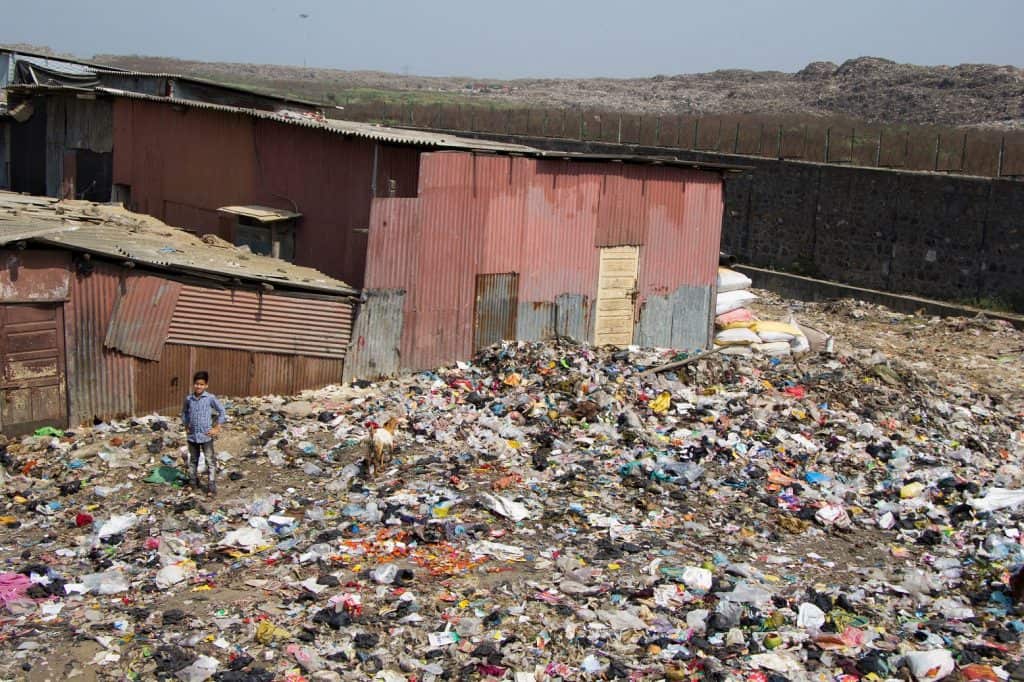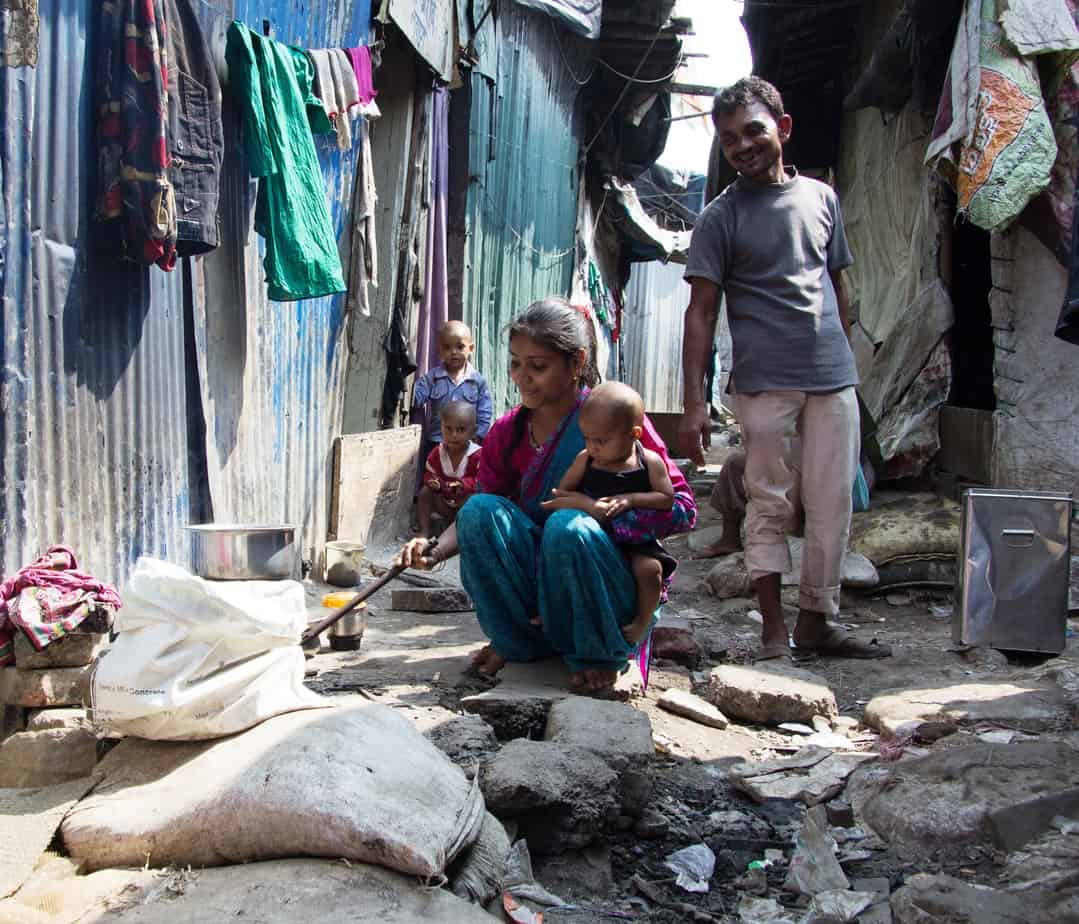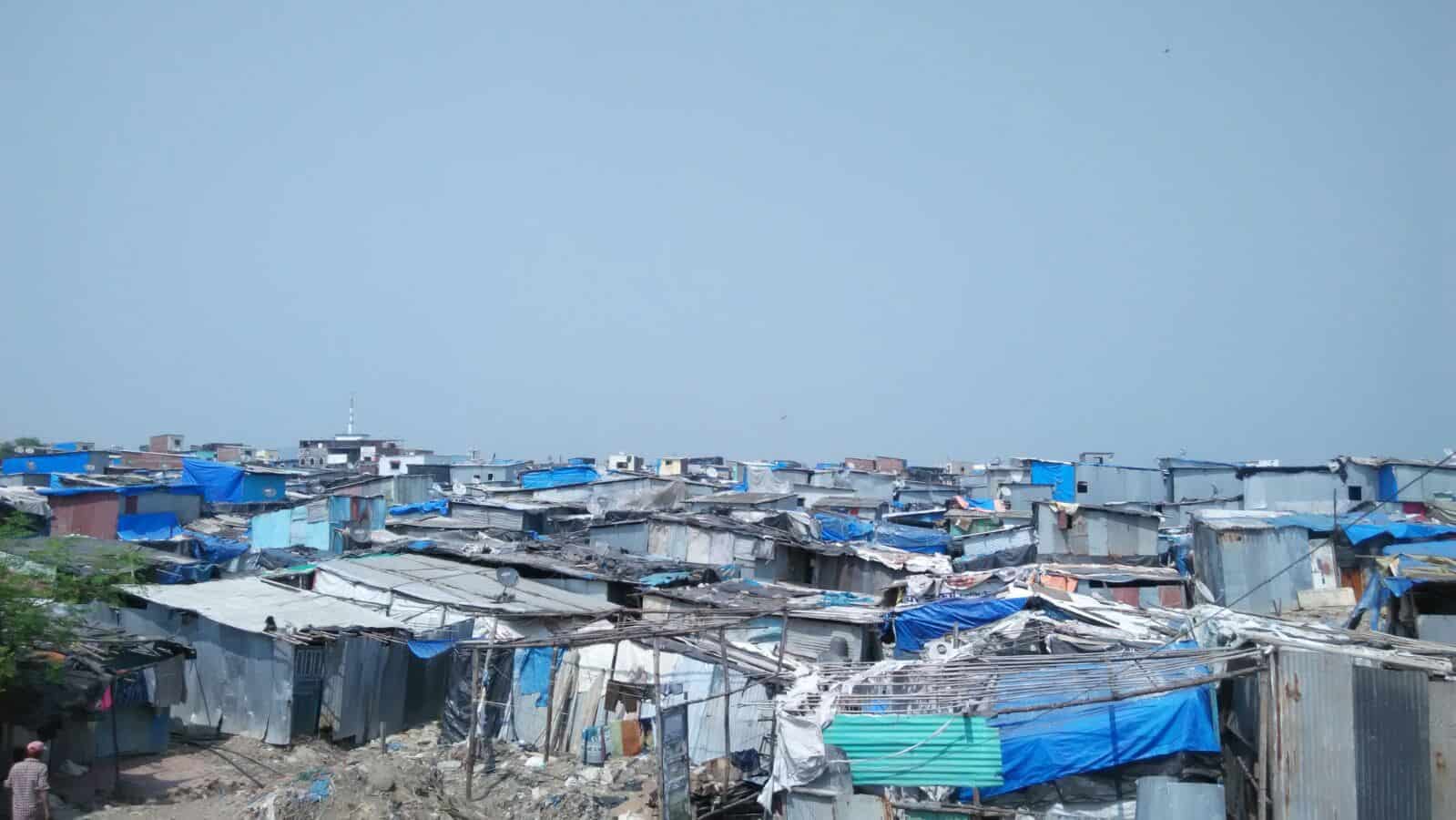Manasi Dighe (name changed) rises before the sun, changes into a sari, plaits her thinning hair, and sets out. At the crack of dawn, her eyes begin searching the road, hoping to find plastic, metal or glass items which, at ₹20 a kilo, could earn her ₹100 in a day. Manasi covers 20 to 30 kilometres daily, when barely a kilometre from her Bhim Nagar hut in Mankhurd, an eastern suburb of Mumbai, is Asia’s largest dumping ground—the Deonar landfill.
Mumbai’s 12.4 million citizens send 9000 metric tonnes of waste to this 134-hectare dumping ground every day. If one corner of the city wasn’t piling up this junk to a height of nearly 18-20 floors, it could accommodate almost 268 football fields or 30 percent of the Bandra-Kurla complex business district. This waste is unsegregated and some slum communities scavenge it for recyclable materials. But not Manasi.
“It’s where gold is” she says, “and only a select few who bribe the municipality can put their hands in it.” But those who do put their hands in, or simply live around, suffer extreme health hazards.
The Deonar dumping ground often makes news, especially when waste decomposes and the emitting methane gas catches fire, or when the municipal corporation announces something outrageous, such as inviting tenders for herbal deodorants to mask the landfill’s stink! But to those living around, the nagging coughs, overflowing sewers, pungent air, or smoke billowing into their houses are not changing headlines but persistent truths.

Mumbai’s 12.4 million citizens send 9000 metric tonnes of waste to this 134-hectare dumping ground every day. To those living around, nagging coughs, overflowing sewers, pungent air, or toxic smoke billowing into their houses are persistent truths. Pic: Apnalaya
Living with the litter
Nearby educational institutions like Tata Institute of Social Sciences (TISS) and non-governmental organisations have continued to raise a stink about the living conditions in this region. “The life expectancy of people still hovers at 39 [as against an urban life expectancy of 73.5 in Maharashtra]”, says Chandrika Rao, Director: Citizenship and Advocacy with NGO, Apnalaya.
A TISS report on the socio-economic conditions and vulnerabilities of the M-east ward (where the dumping ground is situated) also notes a high incidence of malnutrition, respiratory issues, and tuberculosis among inhabitants. But more than the dumping ground itself, “it is a medical-waste incinerator right outside the dumping ground, run by SMS Envoclean (a private company), which is the major cause of existing respiratory issues,” observes Purva Dewoolkar, a member of TISS’s project on transforming M-ward.
All indicators point to the need to set right the years of civic and environmental injustice in and around the dumping ground but the inhabitants’ voice is muffled. “Many residents don’t exist on electoral rolls,” Rao explains. “In Shivaji Nagar (a slum near the dumping ground), only 63 percent people are on electoral rolls. The rest cannot participate in the electoral process.”
Those who can have voted in numerous municipal, assembly, and Lok Sabha elections but without the hope that their vote would change the reality around them. A resident, unwilling to be named, says, “We don’t think the elections will change anything. The garbage will continue to come here. At best, we can move.”

A family living near the dumping ground. The life expectancy of people here hovers at 39, as against an urban life expectancy of 73.5 in the state of Maharashtra. Pic: Apnalaya
The cynicism is understandable as historically, rulers have indulged in a game of accusations, not resolution. In March 2016, weeks after a raging fire at the dump site, Maharashtra Environment Minister and senior Shiv Sena leader Ramdas Kadam alleged that it was the “handiwork” of the BJP and that the party was trying to gain political mileage out of the issue in the run up to the civic polls. Shiv Sena MP Arvind Sawant supported his claim.
Thereafter, Congress President Rahul Gandhi visited the site but it turned out to be just another opportunity to take on the opposition. Despite the concern demonstrated by these politicians, one year later, the situation on the ground remained unchanged. A member of the High Court-appointed Committee himself affirmed that no significant measures had been taken to improve the condition of the city’s largest landfill.
Obviously, no one prefers to live near the dumping ground. And Rao’s research has found that those living around measure their success uniquely, “based on how far away they’ve moved from the dumping ground.”
Tracing the roots
“In 1927, Mumbai started to send its waste, previously deposited in Kurla, to the outskirts of the city in Deonar,” Dewoolkar says. But as the city spread and prices maximised, the region saw a remarkable shift. “Oil refineries, fertilizer plants and resulting employee quarters came up,” she adds. “The railway line was extended, highways constructed, slum dwellers from the island city rehabilitated and further ahead, the satellite town of Navi Mumbai was planned, pitched and executed.”
All along, the dumping ground remained a fixture in the background and ensured lower living costs. Thus, the slums around the dumping ground quietly mushroomed till, in 2011, they took over Dharavi as the largest slum pockets in Asia.
“The slums around the dumping ground, so far, offer the cheapest living options in Mumbai,” says Debartha Banerjee, Director, Sampurna(e)arth Environment Solutions. Many migrants, especially Dalits and Muslims, therefore, move into these slums, where a 6X6 room could cost ₹500-₹1000, and become ragpickers to earn a living. Often underage and exploited by those who’ve risen up the ranks, these rag pickers ignore severe health concerns as they venture into the dumping ground to bring back recyclable material. But, “if it wasn’t for them,” Banerjee points out, “we would have run out of space to dump our waste long ago.”
Flawed thinking
Still, it’s the paucity of space that’s making the Brihanmumbai Municipal Corporation (BMC) hunt for more land outside the city. “Historically”, Banerjee continues, “waste has been treated as collection and transportation business in Mumbai.” But at a time when each administrative ward in the city generates more waste than some cities, it’s foolish to keep lifting garbage from each house and depositing it in a landfill. A range of solutions are essential.
Anyone who understands the problem of waste knows that the solution is in segregating and processing waste at source and stopping it from reaching the landfill. A recent IIT study went a step further and discussed a range of alternative approaches such as composting, anaerobic digestion, and landfill dumping, where waste would be later processed. But the city’s mounting waste problem is not a lack of innovation, but rather, a lack of implementation.
The civic body, for instance, has asked housing societies to segregate their waste but little has been done to enforce the rule. “In the absence of incentives such as property rebates or tax benefits, it’s natural for societies to be resistant in spending their own money in segregating and processing wet waste,” Banerjee concedes.
Who will bell the cat?
India might require mass education drives to be convinced of the need for segregation, but the elephant in the room continues to be what municipal corporations do with their powers and budgets. Activists hint at vested interests when BMC keeps hunting for newer sites to dump waste and allots a significant amount to transportation.
“It’s just not feasible,” Jyoti Mhapsekar, founder member of Stree Mukti Sanghatana, an organisation that works with rag pickers, says. “Till when will some other city take Mumbai’s waste? And the transportation cost will be so high that sooner or later, only decentralised processing will be an option.” Mhapsekar also suggests that rag pickers should be integrated at these decentralised processing centres.
Each year, the BMC budget announces ambitious plans to change the face of waste management in the city, each year it fails. This year too,₹100 crore has been announced for the long-touted waste-t0-energy plant at the dumping ground. Mumbai’s development plan, too, marks certain areas as waste-processing centres, but if the past is any proof, these plans are mired in bureaucratic hassles and end up existing only on paper.
“For Mumbai to be able to manage its waste problem, a lot of things need to happen at once,” Banerjee says. “Segregation, decentralised waste processing, only allowing unprocessed waste to reach the dumping ground which would then be processed without polluting the environment.” But in the same breath, Banerjee concludes that these steps are nearly impossible without the presence of a strong leadership.
Lack of political will
Around the world, strong leadership is associated with an elected mayor or an empowered representative. Mumbai has neither, and is dependent on how willing the Assistant Municipal Commissioners or the ward officers are. “The councillors [the city’s elected representatives] can take up issues in the standing committee meetings,” Dewoolkar says, “but their powers are limited.”
Rakhi Harishchandra Jadhav, an area councillor, believes that it’s the councillors who know and understand their wards but they still aren’t empowered enough to play a significant role in the ideation or implementation of any proposal or plan. “The solid waste management department is a failure,” she says, “and the elected representative, the councillor, has been reduced to someone who merely asks questions and complains to the municipal corporation.”
Regardless of the limited powers, the councillors are closest to the population but fail at providing any comprehensive solutions to their electorate. In fact, contrary to Jadhav’s claims, Praja Foundation, a non-profit organisation, finds that the councillors in the M-east ward have performed poorly and not achieved even what comes easily: raising issues or asking questions about the pressing issues in their ward.
One of M-east ward’s MLA is Samajwadi Party’s Abu Asim Azmi who is better known for his regressive and misogynist comments than for any work in his constituency. The current BJP MP, Kirit Somaiya, might have called out the corruption in BMC’s handling of solid waste, but has been unsuccessful in bringing about any change.
Somaiya is now replaced by Manoj Kotak as the BJP nominee for Mumbai north-east, who has already promised that, “if elected, I will make sure that Deonar dumping ground is closed down”. Residents of M-east ward however are likely to understand it as one more extravagant promise, especially as the Bombay High Court has already allowed dumping of waste on the ground till December 31, 2019—one of several extensions granted over the last few years.
Lip service only?Congress Manifesto, 2019: Implement a solid waste management plan in every habitation, village, town and city employing modern technology and machinery. Those engaged in waste management and disposal will be assured appropriate equipment, dignity and safe working conditions. The Maharashtra state unit of the party released a manifesto exclusively for the environment, where it mentions a ban on the import of waste. BJP Manifesto, 2019: Latest technologies to transform waste to energy (more emphasis on liquid waste and ODF status). Shiv Sena stance: The Shiv Sena, which has not released a separate manifesto for the Lok Sabha elections, has supported the BJP manifesto. However, its 2017 BMC elections manifesto promised scientific treatment of the waste at the dumping ground — a promise it repeated from 2012, claiming that the waste-to-energy plant had failed to attract bidders. Communist Party of India (Marxist) Manifesto: Pay special attention to solid waste management of recyclable/reusable waste; hazardous electronic/chemical and bio-waste through cooperatives of SWM workers without PPP. |
Mumbai’s tenuous problem of waste—or the neglect of regions hanging on its periphery—is a classic example of diffused responsibility. When everyone is responsible, no one is responsible. And so, even citizens are not free of the blame.
“While it’s important for BMC to coordinate with elected representatives and expedite projects,” Mhapsekar says, “it’s equally important to take a larger view of waste management which involves support from each citizen. The prevailing attitude is ‘not in my backyard,’ but Deonar is the city’s backyard. The smoke from the backyard doesn’t stay in the ground, it spreads everywhere.” In the 2016 fire, for instance, the smoke spread enough for the AQI in Bandra Kurla complex (10kms from the dumping ground) to reach 322, indicating ‘hazardous’ levels of pollution.
For rag pickers like Manasi, however, the choice lies between poor health and death by starvation. “I am not concerned about my health,” she says. Apnalaya’s Rao summarises the situation with a particularly sobering thought: “The fact that so many are willing to live and work in a dumping ground is a testament to what they’ve left behind. If they think this is acceptable or even better, then the question is, what have they left behind?”
| This article is part of a series produced under the Citizen Matters – Sustainable Cities Reporting Fellowship and supported by Climate Trends. |
